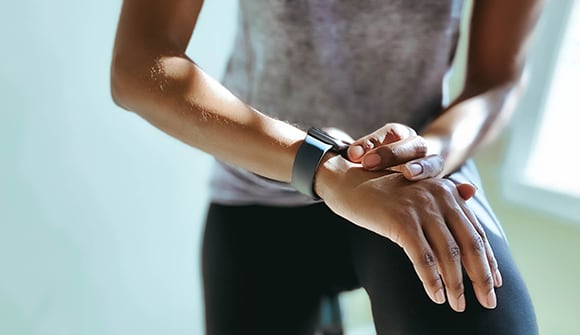PAD is a PAIN!
New solution for treating peripheral artery disease.
Article Author: Beth Stambaugh
Article Date:

An estimated 8.5 million people in the United States have peripheral artery disease (PAD), affecting around 12% to 20% of Americans over the age of 60.
What is peripheral artery disease (PAD)?
The painful condition is caused by a blockage in the arteries of the extremities, usually the legs. Just like blockages in the heart's vessels, PAD is caused by a buildup of plaque and fatty material on the inner walls of the arteries.
Not only does PAD make it difficult to walk, but it's also a major risk factor for heart attack and stroke. The condition is more common in African Americans than in other groups, and men are slightly more likely than women to develop PAD. Peripheral artery disease is also more common in smokers.
What are the symptoms of peripheral arterial disease?
PAD symptoms may include leg pain or numbness, coldness in the lower leg or foot, and painful leg cramps.
Most people with PAD undergo a minimally invasive procedure through the femoral artery (located in the groin). However, some patients who have already had stents in this area or whose body type is not ideal for the traditional approach may benefit from a new treatment option.
This was the case with Harry Morris, whose PAD got so severe, he could no longer walk. Additionally, sleeping was difficult since he had little circulation when lying down. His hobbies of fishing and restoring old cars were on hold, not to mention his overall quality of life suffering greatly.
Fortunately, his cardiologist, Bharat Gummadi, MD, at Baptist Medical Center South, was determined to find a solution.
Finding a new PAD treatment
After attempting to clear the veins through the usual femoral approach without success, Dr. Gummadi looked into other options.
He had previous success in helping heart patients with blockages by going through a radial approach, which involves inserting a catheter into an artery in the wrist and guiding it to the blocked artery in the heart to clear the plaque.
The obstacle Dr. Gummadi faced was not having a catheter long enough to reach from the wrist down to Morris' lower left leg. But he was determined to find a way to make it happen, and was able to find a medical supply company that could provide the right sized catheter.
"Dr. Gummadi was determined to find a solution," said Morris, who is not only walking pain-free now, but is back to his usual lifestyle. Morris was the first patient Dr. Gummadi performed the radial procedure on for PAD.
"This approach through the wrist decreases complications and allows for quicker recovery," said Dr. Gummadi. "With the radial approach, patients can sit up and get walking more quickly, which is vital to recovery." The procedure requires only local anesthesia.
Pain-free after PAD
After one night at Baptist Medical Center South, Morris was able to go home. Many patients are even discharged the same day as the procedure.
"Dr. Gummadi got me straightened out," said Morris. "I feel fortunate to be the first patient he performed this approach on." Since Morris's procedure, Dr. Gummadi plans to add the radial approach to his toolbox to help more patients recover from PAD.
PAD treatment at Baptist
If you're experiencing symptoms of PAD, appointments are available at Baptist Heart Specialists. Call 904.720.0799 to make an appointment or request an appointment online.



